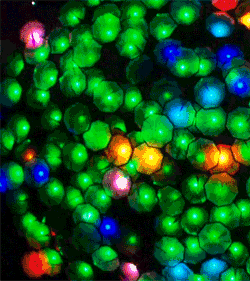Here's another great sample from my new book,
Welcome to Weirdsville ... this time about the wonderful (and often creepy) world of mushrooms:
The Fungus Among Us
Let's play a game: animal, mineral, or vegetable?
The answer? Two out of three. Ladies and gentlemen: the wonderful, and let's not forget weird, world of fungi.
But first a ridiculously quick science lesson, and an explanation for the opening above: scientists consider fungi to be part of a separate and unique kingdom, in that they aren't plants and they're not animals -- so they really are two out of three.
It's this 'not one and not the other' that make fungi wonderfully – and somewhat disturbing – to study. At their most identifiable they an fundamental part of our diet: buttons, portobellos, shitakes, oysters, morels, chanterelles, and more – including the expensive yet ubiquitous truffle. But fungi are also essential to make many of our foods ... well, food: without them we wouldn't have cheese, beer, wine, bread and too many others to name. If that isn't impressive enough, our odd not-quite-an-animal, not-quite-a-plant, is also indispensable to medicine: penicillin, the cornerstone of antibiotics, was mold found in a Petri dish, after all. In fact some experts claim that if anything were to happen to our fungal friends humanity would be, at worst, extinct, or at best, pretty miserable.

But mushrooms and yeasts and molds are only the public face of the fungal world. Beyond beer, wine, cheese, and medicine there's a stranger side – in fact a rainbow of oddness. Mushrooms, you may think, are brown or white, right? But fungi can also be spectacularly colorful: the Parrot Waxcap is as green as grass, the Crimson Waxy Cap is sunset crimson, and the Slimy Spike-cap is even bright purple. There are even varieties of mushroom that aren't just colorful but actually glow in the dark: Omphalotus olearius, the Jack o' Lantern, for example, is a celebrated bioluminescent fungus, as is the Australian ghost fungus.
Even when fungi are brown and dull appearances can be deceiving: the aptly named stinkhorn, for example, produces the aroma of rotting meat to attract flies, which help the mushroom spread its spores. Speaking of spore-spreading, the puffball mushroom and its various relations do it in a very dramatic fashion, quite literally shooting their spawn into the air when touched.
But for all their color and their clever tricks, fungi have an even odder side, one that might make you look at that blue cheese in your sandwich, or that beer you were planning to have with lunch, a little differently – if not with out-and-out fear.
Sure, fungi have given us much but they can also take it away, and not just for people who mistake an amanita phalloides for an amanita caesarea: Cryptococcus gattii, though rare, is alarmingly fatal and is airborne. How fatal? Well, it's considered to be one of – if not the – most lethal fungal infections you can get. There are other deadly fungi, and as most of them are extremely opportunistic and durable, they can spread wildly and are all but impossible to kill. Just think athlete's foot mixed with a rattlesnake.

It's fungi's ability to grow just about anywhere that makes it so amazing. If you name a hostile environment there's more than likely some form of mushroom or yeast that will not only grow there but prefer it over anywhere else. An extreme version of this is when researchers stuck their instruments into one of the most poisonous places on earth and found not only a species of mushroom growing there but one that actually appears to be feeding on the toxicity. How nasty is this place? Well, all you need to say is one word to shudder at the thought: Chernobyl.
But strangeness and fungi don't end with radiation-feasting mushrooms, for there are quite a number of them that feast on other things -- including animals. Nematophagous fungi, for instance, grow miniscule rings that, if a nematode happens to squirm into one, rapidly contract, trapping the unfortunate lunch ... I mean 'worm.' If this makes you a bit nervous take a bit of consolation in that the popular oyster mushroom is also a nematode killer – and it's also tasty, so while it eats them we also eat it.
But eating isn't the only dark thing fungi do. One particular species has an extremely disturbing lifecycle – and a terrifying one ... if you happen to be an ant. Ophiocordyceps unilateralis, if it gets half a chance, will infect an ant and (ahem) eat parts of its brain, causing the poor little insect to basically become the walking dead The fungus finishes it off only after it clamps itself to the underside of a leaf, just where the fungus wants it to die – a location that works really well for the fungi, but definitely not the ant.
Yes, they have given us much: all those mushrooms and other amazing fungi. Without them we would have very bland food, let alone no booze, and would probably die a lot quicker without antibiotics. Some of them are as pretty as flowers, a few may be deadly to the unlucky or the tragically ignorant, while further species lurk in the soil for the unwary nematode, but – basically – they have been our friends for a very long time.
Besides, we'd better watch our step: while the jury is out on the subject, many experts point to a certain forest in Oregon. What's special about this hunk of land, that particular stand of trees? Well, the honey mushroom that lives there, and occupies over 2,200 acres of that forest, may very well be the largest organism on the earth.
So we had better treat them well -- all those wondrous fungi -- just in case that they, or just that single huge mushroom, should wake up and remind us of all they've done for us ... or could do to us.












